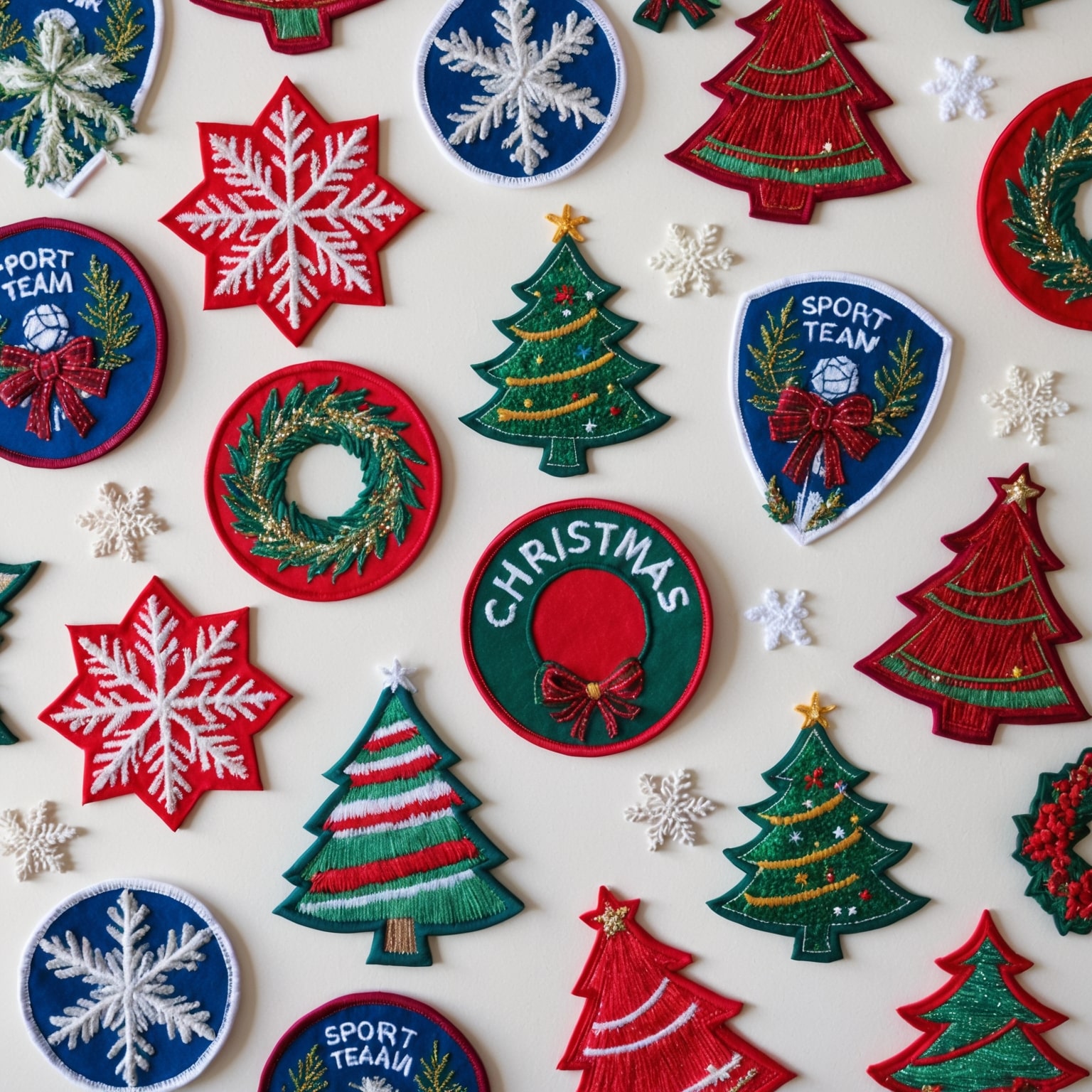The Symbolism and Significance of Military Patches
Military patches are not just decorative elements on a uniform; they are powerful symbols that reflect the heritage, values, and traditions of military units and branches. These patches often encapsulate the history and achievements of the military, serving as visual representations of the pride and honor associated with service. From insignias that denote rank and unit to commemorative patches that celebrate specific missions or accomplishments, each piece tells a unique story. This article explores the rich tradition of military patches, highlighting how they embody military heritage and contribute to the collective memory of those who serve.
1. The Historical Origins of Military Patches
Early Use of Military Insignia
The use of insignia and symbols to denote military affiliation dates back to ancient civilizations. Early warriors and soldiers often wore symbols on their clothing, shields, or banners to identify their allegiance and rank. These early insignias laid the groundwork for the development of military patches, which became more standardized and formalized over time.
Example: Roman soldiers wore distinctive armor and carried shields adorned with symbols representing their legion and rank, providing a visual representation of their military affiliation.
The Evolution of Patches in Modern Military
In the modern era, military patches became an integral part of military uniforms. During World War I, the use of patches to identify units and ranks became more common, helping to distinguish different branches and units within the armed forces. The practice expanded significantly during World War II, with the introduction of shoulder sleeve insignia (SSI) and other patches that symbolized specific divisions, units, and campaigns.
Example: The 101st Airborne Division’s “Screaming Eagle” patch became iconic during World War II, symbolizing the bravery and airborne capabilities of the division’s soldiers.
2. The Design and Symbolism of Military Patches
Colors and Shapes
The colors and shapes used in military patches often carry specific meanings. For example, blue may symbolize loyalty and vigilance, while red can represent courage and sacrifice. Shapes such as shields, stars, and eagles are commonly used to denote protection, guidance, and strength. The design elements are carefully chosen to reflect the values and mission of the unit.
Example: The U.S. Army’s “Big Red One” patch, featuring a bold red numeral “1,” represents the 1st Infantry Division and symbolizes its historical significance as the first division of the U.S. Army.
Emblems and Icons
Emblems and icons are central to the design of military patches. These symbols can include animals, weapons, and other imagery that represent the unit’s attributes and history. For instance, a lion may symbolize courage, while a sword represents combat readiness. The inclusion of these icons helps to convey the unit’s identity and heritage.
Example: The U.S. Marine Corps’ “Eagle, Globe, and Anchor” emblem is a powerful symbol of the Corps’ global reach, naval traditions, and commitment to defending the nation.
Inscriptions and Mottos
Many military patches include inscriptions or mottos that capture the essence of the unit’s mission and values. These mottos often serve as a source of inspiration and pride for the members of the unit. They can be in Latin, English, or other languages, depending on the unit’s traditions and history.
Example: The U.S. Navy SEALs’ motto “The Only Easy Day Was Yesterday” reflects the rigorous training and challenging missions that define the elite special operations force.
3. Iconic Military Patches and Their Heritage
The 82nd Airborne Division
The 82nd Airborne Division’s patch, featuring a blue circle with a red “AA” (All American) on a white background, is one of the most recognizable in the U.S. military. The division earned its nickname and patch during World War I, as its members hailed from all 48 states at the time. The patch symbolizes the division’s readiness to deploy anywhere in the world and its storied history of airborne operations.
Example: The “All American” patch is a testament to the 82nd Airborne Division’s legacy of bravery and versatility, from World War II to modern-day operations.
The 1st Marine Division
The 1st Marine Division’s patch features a blue diamond with a white star in each corner and a red numeral “1” in the center. The division earned its nickname “The Old Breed” and the red numeral during World War II, symbolizing its status as the first Marine division. The stars represent the Southern Cross constellation, reflecting the division’s role in the Pacific Theater.
Example: The 1st Marine Division’s patch embodies the division’s long-standing tradition of excellence and its significant contributions to the Marine Corps’ history.
The Royal Air Force (RAF) Roundel
The Royal Air Force’s roundel, featuring concentric circles of red, white, and blue, is an iconic symbol of the RAF’s heritage. The design was adapted from the French Air Force during World War I and has since become synonymous with British air power. The roundel symbolizes the RAF’s commitment to defending the skies and its role in aviation history.
Example: The RAF roundel is a symbol of the bravery and skill of British pilots, from the Battle of Britain to modern air operations.
The Special Air Service (SAS) Regiment
The British SAS Regiment’s winged dagger emblem, accompanied by the motto “Who Dares Wins,” is one of the most recognized symbols of special forces excellence. The patch represents the SAS’s daring and elite status, reflecting its role in conducting covert and high-risk operations. The emblem and motto have become synonymous with the regiment’s reputation for courage and professionalism.
Example: The SAS patch and motto have inspired special forces units around the world, symbolizing the regiment’s legacy of daring and effective operations.
4. The Role of Military Patches in Commemorating Service
Honoring Campaigns and Operations
Military patches are often used to commemorate specific campaigns and operations. These patches serve as a visual record of a unit’s participation in significant events and battles. They are worn with pride by service members who took part in these operations, serving as a reminder of their contributions and sacrifices.
Example: The Desert Storm patch commemorates the U.S. military’s involvement in the Gulf War, featuring imagery that reflects the operation’s desert environment and coalition forces.
Recognizing Units and Subunits
Patches also play a role in recognizing the distinct identities of different units and sub-units within the military. Each unit may have its own unique patch that distinguishes it from others, reflecting its specific mission, role, and history. These patches help to foster a sense of belonging and pride among unit members.
Example: The U.S. Army’s 10th Mountain Division patch, featuring a pair of crossed bayonets, symbolizes the division’s specialized mountain warfare capabilities and its storied history.
Commemorative Patches and Special Editions
In addition to standard issue patches, military organizations often create commemorative patches for special occasions, anniversaries, or significant achievements. These special edition patches are cherished by service members and collectors alike, offering a unique way to celebrate important milestones and events.
Example: The 75th anniversary patch of the D-Day invasion features imagery that honors the bravery of the Allied forces who stormed the beaches of Normandy.
5. Collecting and Preserving Military Patches
The Appeal of Collecting Military Patches
Collecting military patches is a popular hobby for many enthusiasts, historians, and veterans. The appeal lies in the rich history and stories behind each patch, as well as the artistry and design. Collectors often focus on specific themes, such as patches from a particular era, branch, or campaign.
Example: A collector might specialize in patches from World War II, seeking out rare and unique patches from different branches and units.
Authenticity and Provenance
When collecting military patches, it’s important to consider authenticity and provenance. Authentic patches can be distinguished from reproductions by examining factors such as stitching, materials, and wear. Provenance, or the history of the patch’s ownership, adds value and significance to a collection.
Example: A patch with documented provenance, such as a letter from the original owner or a certificate of authenticity, is often more valuable to collectors.
Preservation and Display
Proper preservation is crucial for maintaining the condition of military patches. Patches should be stored in a cool, dry environment, away from direct sunlight and humidity. Display options include shadow boxes, frames, and albums, which protect the patches while showcasing their designs.
Example: A collector might create a shadow box display featuring patches from different campaigns, arranged in chronological order with accompanying descriptions.
6. The Future of Military Patches: Trends and Innovations
Innovations in Design and Technology
As technology advances, the design and production of military patches are evolving. Digital design tools allow for more intricate and detailed artwork, while new materials and manufacturing techniques offer greater durability and customization options. These innovations enable military organizations to create patches that reflect modern aesthetics while honoring traditional symbols.
Example: A military unit might use advanced embroidery techniques to create a patch with 3D elements, adding depth and texture to the design.
Commemorative and Limited-Edition Patches
Commemorative and limited-edition patches continue to be popular. These patches are often created to mark special events, anniversaries, or achievements. They can serve as collectible items for service members and the public, offering a unique way to celebrate significant moments in military history.
Example: A military branch might issue a limited-edition patch to commemorate the retirement of a distinguished general, featuring a special design that honors their contributions.
Patches for Modern Missions and Multinational Operations
As military operations become increasingly multinational, patches often reflect the collaborative nature of these missions. Joint operations patches may include symbols and elements from multiple countries, emphasizing international cooperation and unity. These patches symbolize the shared commitment of allied forces to achieving common goals.
Example: A patch for a NATO mission might feature the flags of participating countries and the NATO emblem, representing the alliance’s collective defense efforts.
The Enduring Legacy of Military Patches
Military patches are more than just pieces of fabric; they are powerful symbols that reflect the heritage, values, and traditions of military units and branches. Each patch tells a unique story, capturing the essence of a unit’s history, mission, and achievements. For service members, these patches are badges of honor, representing their commitment to duty and their contributions to the greater good.
As military patches continue to evolve, they remain an important part of military culture and heritage. They foster a sense of identity and pride among service members, honor significant events and achievements, and serve as cherished keepsakes for collectors and veterans alike. In a world where symbols and traditions hold great significance, military patches stand out as enduring emblems of honor, service, and sacrifice.
Whether displayed on a uniform, collected as memorabilia, or used to connect with the past, military patches continue to play a vital role in preserving and celebrating the rich heritage of the armed forces. They are a testament to the bravery, dedication, and resilience of those who serve, and they will continue to be a source of pride and inspiration for generations to come.
If you are interested in purchasing high-quality custom patches, feel free to call us at 1-877-503-8485 or fill out one of our FREE quotes here.




